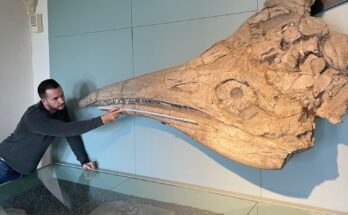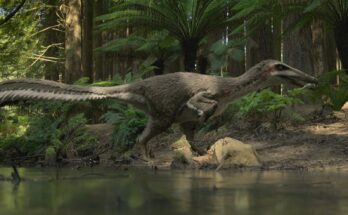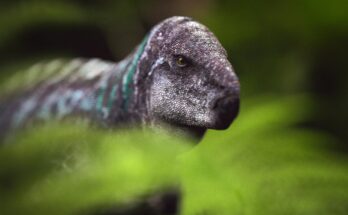Introduction
Move over, Triceratops—there’s another horned dinosaur that deserves the spotlight. Meet Pachyrhinosaurus, the thick-nosed, boss-headed ceratopsian that roamed the frozen north during the Late Cretaceous. Unlike its famous cousin, this dinosaur replaced horns with a massive bony lump—but it was no less formidable.
In this deep dive, we’ll uncover:
✔ The Alaskan & Canadian fossils that rewrote ceratopsian history
✔ Why it had a “battering ram” face instead of long horns
✔ How it survived freezing Arctic winters
✔ Its epic battles with predators like Nanuqsaurus
Get ready to meet the tank of the tundra!
Chapter 1: Discovery & Naming—A Northern Giant
Fossil Finds (1940s-Present)
- First discovered in Alberta, Canada (1946) by paleontologist Charles M. Sternberg.
- Named Pachyrhinosaurus canadensis (“thick-nosed lizard from Canada”) in 1950.
- Major bonebeds found in Alaska (Pachyrhinosaurus perotorum)—proving these dinosaurs lived in polar conditions.
Why It Stunned Scientists
- No traditional horns—just a giant bony “boss” on its snout.
- Fossilized skin impressions revealed scales and possible quill-like bristles.
- Herd evidence—mass death sites suggest group migrations or drownings.
Fun Fact: The Alaskan species (P. perotorum) was named after Ross Perot, who funded its excavation!
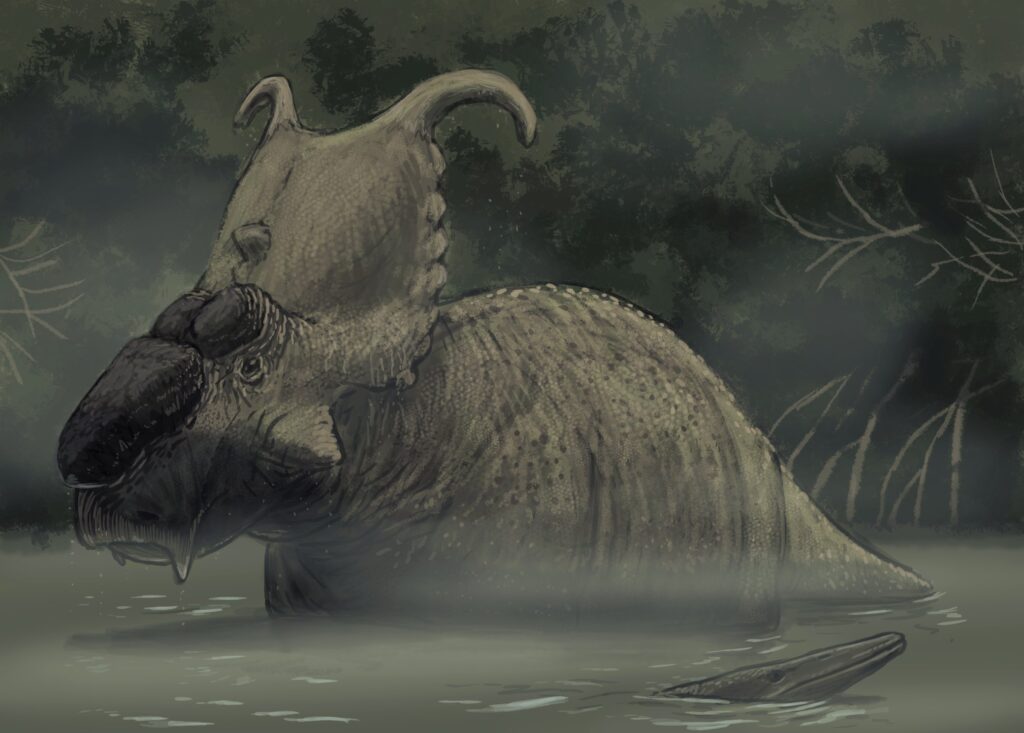
Chapter 2: Anatomy of a Tundra Titan
Size & Build
- Length: 18-26 ft (5.5-8 m)—as long as a pickup truck.
- Weight: 2-4 tons—heavier than a rhino.
- Skull: Up to 6 ft (1.8 m) long, with a solid bone “shield” (frill).
The Famous Nasal Boss
✔ Not a horn—but a thick, rounded mass of bone (possibly for head-butting).
✔ Some species had curved spikes on the frill (like P. lakustai).
✔ Jaw strength rivaled Triceratops—could shear through tough plants.
Polar Adaptations
- Possible seasonal migrations to avoid winter darkness.
- Large body size helped retain heat (like modern muskoxen).
- Keratined beak for cropping ferns, horsetails, and woody shrubs.
Myth Buster: Despite Walking with Dinosaurs depictions, Pachyrhinosaurus did NOT have a rhino-like horn—just bone!
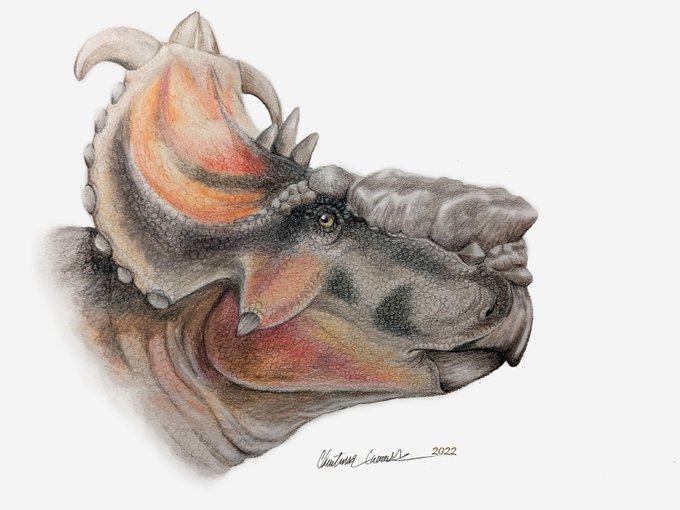
Chapter 3: Life in the Arctic Circle
Herd Behavior
- Mass bonebeds (like the Alaskan “Pachyrhino Army”) suggest large herds.
- Juvenile fossils imply group protection & parental care.
Predators & Defenses
- Primary foe: Nanuqsaurus (“polar T. rex“).
- Frigid winters may have been deadlier than dinosaurs!
Head-Butting or Shoving Matches?
- Bony boss likely used for intraspecies combat (like muskoxen).
- Frill spikes may have been display structures.
Big Question: Did Pachyrhinosaurus hibernate or migrate south for winter?
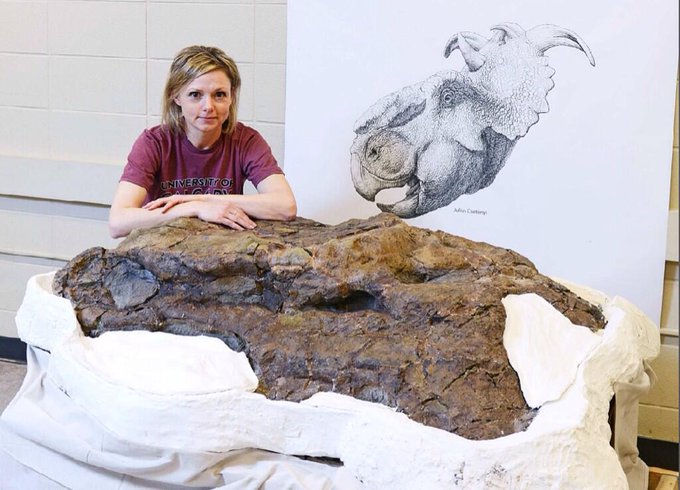
Chapter 4: Why Pachyrhinosaurus Matters
A Ceratopsian Unlike Any Other
- Proves horned dinosaurs adapted to extreme climates.
- Shows evolutionary experimentation in ceratopsians.
Alaska’s Dinosaur Icon
- State fossil of Alaska’s North Slope.
- Featured in March of the Dinosaurs & Dinosaur Planet.
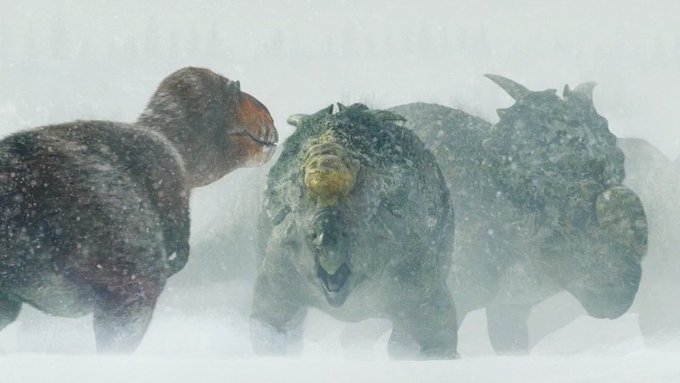
Chapter 5: Extinction—The Last Stand of the Northern Giants
The K-Pg Asteroid (66 Million Years Ago)
- Died out with all non-avian dinosaurs.
- Its Arctic ecosystem vanished under ice ages.
Living Relatives?
- None—but its legacy lives on in Alaskan fossil exhibits.
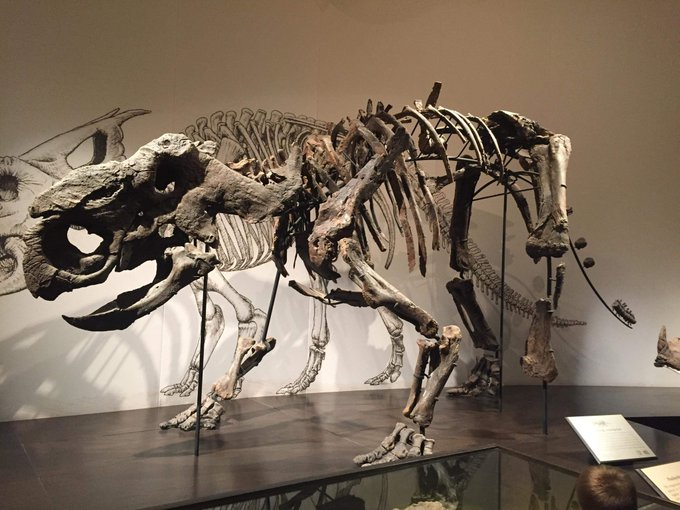
Conclusion: The Polar King of Ceratopsians
Pachyrhinosaurus was built for survival—a bone-armored, social, Arctic-adapted marvel. Its fossils remind us that dinosaurs thrived everywhere, even at the ends of the Earth.
Final Thought: If Pachyrhinosaurus had survived, would it have evolved into a woolly, Ice Age ceratopsian?
Want More Horned Dino Stories?
✅ Follow for more ceratopsian deep dives!
✅ Comment: Should Pachyrhinosaurus be as famous as Triceratops? 🦕❄️
